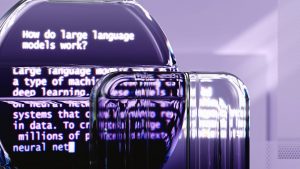Advances in Computation and Language in Computer Science
Explore breakthroughs in computation and language within computer science. Stay ahead with insights into cutting-edge technologies today.
Natural Language Processing
Introduction to Natural Language Processing
Natural Language Processing (NLP) is a subfield of computer science and artificial intelligence that focuses on the interaction between computers and humans through natural language. The ultimate objective of NLP is to enable computers to understand, interpret, and respond to human language in a valuable way.
NLP combines computational linguistics with machine learning, statistical, and deep learning models to process and analyze large amounts of natural language data.
It plays a crucial role in various applications such as translation services, sentiment analysis, and chatbots.
Key Techniques in NLP
NLP employs several techniques to process language, including tokenization, parsing, and semantic analysis. Tokenization involves breaking down text into smaller units, such as words or phrases, which can be analyzed individually.
Parsing is the process of analyzing the grammatical structure of a sentence, while semantic analysis aims to understand the meaning behind the words.
Another critical technique is named entity recognition, which identifies and categorizes key information in text, such as names, dates, and locations. Part-of-speech tagging, which assigns parts of speech to each word, is also a fundamental technique used in NLP.
Applications of NLP
NLP has a wide range of applications across different industries.
In the field of customer service, chatbots powered by NLP can provide instant support and handle inquiries efficiently. In healthcare, NLP is used to extract meaningful information from unstructured clinical data, aiding in patient diagnosis and treatment planning.
Moreover, NLP is integral to search engines, enhancing the ability to understand and retrieve relevant information based on user queries.
It also plays a significant role in sentiment analysis, helping businesses gauge public opinion and improve their products and services.
Challenges in NLP
Despite its advancements, NLP faces several challenges. Language is inherently complex and ambiguous, with words often having multiple meanings depending on context.
This ambiguity poses a significant hurdle for NLP systems attempting to accurately interpret language.
Additionally, NLP systems must handle diverse languages and dialects, each with unique grammatical rules and structures. The subtleties of human emotion and cultural nuances further complicate the development of robust NLP models capable of understanding and generating human-like responses.
Machine Translation
Overview
Machine Translation (MT) is a subfield of computational linguistics that focuses on the use of software to translate text or speech from one language to another.
It is a crucial aspect of natural language processing (NLP) and has gained significant attention due to the increasing need for multilingual communication in a globalized world. MT systems aim to achieve high levels of accuracy and fluency, often leveraging vast datasets and complex algorithms.
Types of Machine Translation
There are several types of machine translation systems, each with distinct methodologies.
The most common types include rule-based, statistical, and neural machine translation.
Rule-Based Machine Translation (RBMT): This approach relies on linguistic rules and bilingual dictionaries to perform translations. It requires extensive manual work to craft rules for each language pair, making it less scalable.
Statistical Machine Translation (SMT): SMT uses statistical models derived from analyzing large bilingual text corpora.
It predicts the likelihood of a word or phrase being the correct translation based on frequency and context within the data.
Neural Machine Translation (NMT): NMT employs deep learning techniques, particularly neural networks, to model entire sentences in a single integrated model. It has become the dominant method due to its ability to produce more fluent and natural translations.
Challenges
Despite advancements, machine translation faces several challenges.
One major issue is handling idiomatic expressions and cultural nuances, which can lead to translations that are technically correct but contextually inappropriate. Additionally, low-resource languages often lack sufficient data to train effective models, resulting in poorer translation quality compared to high-resource languages.
Another challenge is maintaining the balance between preserving the original meaning and achieving grammatical correctness in the target language.
This often requires sophisticated algorithms capable of understanding context and semantics at a deeper level.
Applications
Machine translation is widely used in various applications, from real-time translation services like Google Translate to aiding in international business communications. It also plays a crucial role in localization, enabling content to be adapted for different cultural and linguistic contexts efficiently.
In academia, MT facilitates the dissemination of research across language barriers, promoting greater collaboration and knowledge exchange.
Furthermore, it assists in humanitarian efforts by providing translations in crisis situations where human translators may not be available.
Computational Linguistics
Overview
Computational linguistics is an interdisciplinary field at the intersection of computer science and linguistics. It focuses on the use of computational methods to process and analyze human language.
This field has gained significant importance with the rise of natural language processing (NLP) applications, which enable machines to understand, interpret, and respond to human language in a valuable way.
Key Areas of Research
Research in computational linguistics encompasses various areas, including syntax, semantics, and phonetics. Syntax involves the study of the structure of sentences, while semantics focuses on meaning.
Phonetics deals with the sounds of speech. Researchers in this field aim to develop algorithms that can accurately model these aspects of language.
Another crucial area is machine translation, where the goal is to automatically translate text or speech from one language to another.
This involves complex challenges such as preserving meaning and context across languages.
Applications
Computational linguistics has numerous practical applications. One prominent application is in the development of intelligent virtual assistants like Siri and Alexa, which rely heavily on speech recognition and natural language understanding.
These systems use computational linguistics to interpret user queries and provide relevant responses.
Another application is in sentiment analysis, which involves determining the sentiment expressed in a piece of text. This is particularly useful in fields like marketing and customer service, where understanding customer opinions can drive business decisions.
Challenges
Despite its advancements, computational linguistics faces several challenges.
One major challenge is dealing with the ambiguity and variability of human language. Words can have multiple meanings depending on context, and languages can vary significantly in structure and usage.
Additionally, computational linguistics must address issues related to multilingualism and the need for systems that can seamlessly handle multiple languages.
This requires extensive datasets and sophisticated algorithms capable of understanding and processing diverse linguistic inputs.
Future Directions
The future of computational linguistics is promising, with ongoing research focused on improving the accuracy and efficiency of language processing systems. Advances in machine learning and artificial intelligence are expected to drive further innovations, enabling more sophisticated language models and applications.
As the field continues to evolve, it is likely to play an increasingly crucial role in bridging the gap between humans and machines, facilitating more natural and effective communication.
Information Retrieval
Definition and Importance
Information retrieval (IR) is a critical area within computer science, particularly in the domain of computation and language.
It involves the process of obtaining relevant information from a large repository, such as databases, the internet, or other digital sources. The primary goal of IR is to provide users with the most pertinent results based on their queries, enhancing the efficiency and effectiveness of information access.
In the context of computation and language, IR plays a pivotal role in bridging the gap between human language and machine understanding.
By leveraging natural language processing (NLP) techniques, IR systems can interpret and process user queries more accurately, leading to improved search results and user satisfaction.
Key Techniques and Algorithms
Several techniques and algorithms are fundamental to the field of information retrieval. One of the most widely used methods is the vector space model, which represents documents and queries as vectors in a multi-dimensional space.
This model enables the computation of similarity scores between documents and queries, facilitating the ranking of search results.
Another essential technique is the use of inverted indexes, which allow for fast look-up of documents containing specific terms. This structure significantly speeds up the retrieval process, making it feasible to search through vast amounts of data efficiently.
Machine learning algorithms have also become integral to modern IR systems.
Techniques such as clustering and classification help in organizing and categorizing information, while relevance feedback mechanisms improve search results by learning from user interactions.
Challenges and Future Directions
Despite significant advancements, information retrieval faces several challenges. One major issue is the ambiguity and variability of human language, which can lead to misunderstandings and irrelevant search results.
Addressing these challenges requires ongoing research in NLP and semantic analysis to enhance the understanding of context and intent in user queries.
Another challenge is the scalability of IR systems, particularly as the volume of digital information continues to grow exponentially. Developing more efficient algorithms and leveraging distributed computing resources are critical to maintaining performance and accuracy.
The future of information retrieval lies in the integration of advanced AI techniques, such as deep learning and neural networks, to further enhance the precision and personalization of search results.
As these technologies evolve, they promise to transform IR systems into even more powerful tools for accessing and understanding information.
FAQ
Q: What is the focus of the “Computation and Language” field in computer science?
A: The “Computation and Language” field in computer science primarily focuses on the intersection of computational techniques and linguistic analysis. It involves the development of algorithms and models to understand, interpret, and generate human language. This field encompasses natural language processing (NLP), computational linguistics, and language technologies, aiming to enable computers to process and interact with human language effectively.
Q: How does natural language processing (NLP) relate to computation and language?
A: Natural language processing (NLP) is a crucial component of the computation and language field. It involves the use of computational methods to analyze and synthesize natural language and speech. NLP tasks include language translation, sentiment analysis, speech recognition, and text summarization. By leveraging machine learning and artificial intelligence, NLP seeks to bridge the gap between human communication and computer understanding.
Q: What are some real-world applications of computation and language technologies?
A: Computation and language technologies have a wide range of real-world applications. These include virtual assistants like Siri and Alexa, which use speech recognition and natural language understanding to interact with users. Other applications include automated customer service chatbots, machine translation services like Google Translate, and sentiment analysis tools used in social media monitoring. These technologies enhance human-computer interaction and improve accessibility and efficiency in various industries.
Takeaway
In conclusion, the field of Computer Science, specifically focusing on Computation and Language, offers endless opportunities for innovation and discovery. Whether you are a student, researcher, or industry professional, embracing this dynamic intersection can lead to groundbreaking advancements in artificial intelligence, natural language processing, and more. Take the next step in your journey by exploring the latest trends, conducting research, or collaborating with experts in the field. Together, let’s push the boundaries of what is possible in Computation and Language within Computer Science. Start your journey today and unlock the potential of this exciting field!











Comments